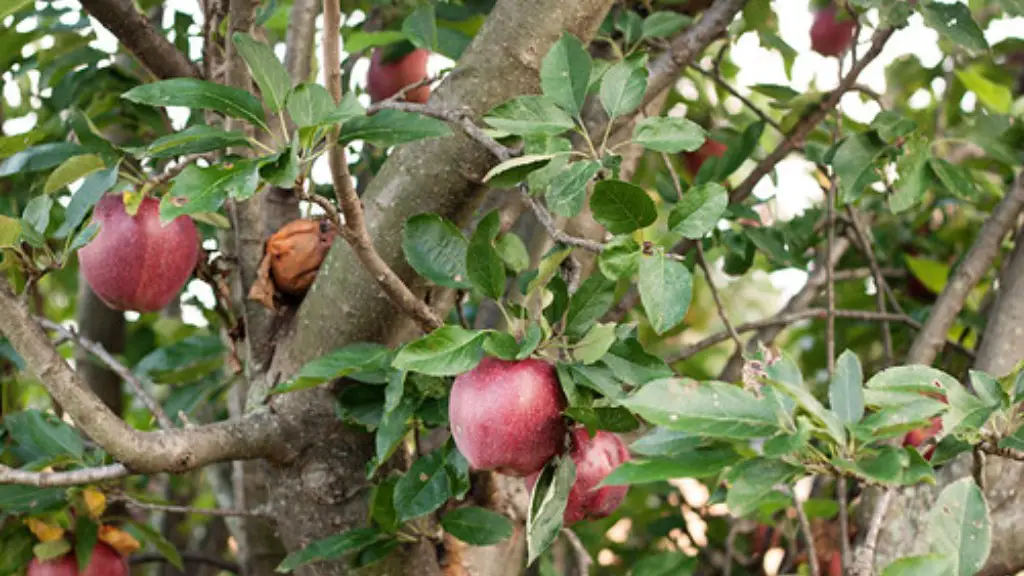The Growth of an Avocado Tree
An avocado tree is a versatile fruit crop. It is known for its robust nature, health benefits, and wide variety of uses. But how big can it actually grow? While avocado tree size varies greatly depending on the cultivar, climate, and soil, a well-maintained avocado tree can grow up to 65 feet tall and 30 feet wide.
Depending on the type and variety, avocado tree size can range from dwarf to semi-dwarf to standard. Dwarf varieties usually top out around 10 to 12 feet tall, while semi-dwarf cultivars can easily reach 35 to 40 feet. Standard trees, on the other hand, can attain heights of up to 65 feet.
Avocado trees are known for their slow growth rates, but with proper care, the right space, and a good nutrient-rich soil, the trees can bloom quickly. Avocado trees can reach full maturity in 4 to 5 years. As they mature, they grow wider and stronger, with some specimens becoming almost as round as they are tall.
Though it can grow quite tall, the size of an avocado tree can be easily managed. Most standard varieties can be pruned and trimmed regularly to ensure it doesn’t become too tall or wide. Pruning should occur in the spring, while dormant season pruning is important to protect the tree from damage.
When planting an avocado tree, it is important to give it adequate space to grow. It is recommended to provide each tree at least 10 to 12 feet of space in order to allow even growth. Trees in crowded conditions may grow lop-sided and are more susceptible to disease and pests.
Avocado trees prefer nutrient-rich soil with a neutral pH balance. Amending soils is recommended prior to planting in order to improve the soil and provide necessary nutrients for optimal growth. After planting, avocado trees should be fertilized regularly to ensure they have enough food to remain healthy and develop to their full potential.
Caring for Avocado Trees
Avocado trees require consistent monitoring and care, especially during their first few years of growth. Regular watering, pruning, and fertilizing, are important for keeping the avocado tree healthy. During the first year it is important to make sure trees do not suffer from lack of moisture, while during the summer it is important to make sure the tree is not over-watered, as this can cause root rot. In general, avocado trees require waterings twice per week for the first year, and once a week thereafter.
Fertilization is also important for avocado trees, as it helps provide essential nutrients for healthy growth. Generally, avocado trees should be fertilized three times per year: once in spring, once in summer and once in fall. Slow-release fertilizers are recommended as they provide a steady supply of nutrients over a long period of time. However, it is important to adjust the amount of fertilizer based on the size and age of the tree, as well as weather conditions.
Pruning avocado trees is also essential for their development, as it helps control its shape and size, and protects it from disease. Pruning should be done in late winter or early spring, and it is important to remove dead, diseased, and weak branches to maintain a healthy shape. Pruning should also be done during the summer to manage the size of the tree.
Harvesting the Avocado
When an avocado tree is planted correctly and given ample water, nutrient and sunlight, the tree will eventually produce a crop of delicious fruits. It is generally recommended to wait until the fourth or fifth year to begin harvesting the fruits. The exact time of harvest depends on the variety and the climate, but in most cases it will take between 4 to 6 months for the fruit to ripen. Some varieties may take longer.
When the fruit starts to color and develops a soft flesh, the fruits can be harvested. It is important to ensure that the fruit is harvested when ripe, as unripe fruits will not ripen any further. For each tree, it is recommended to pick some fruit before the tree is fully ripe, to ensure that the entire crop is not lost in one fell swoop.
Avocados should be handpicked as they will ripen on the shelf. It is not recommended to use any kind of machine or tool in harvesting the fruits, as this may damage them. Once harvested, the ripe avocados should be refrigerated or consumed immediately. Unripe avocados should be kept away from direct sunlight and at room temperature, as this will encourage ripening.
The Benefits of Avocado Trees
Avocado trees are not only a valuable source of nutrition, but they are also popular ornamental trees in many regions. A single, mature avocado tree can produce over 200 pounds of fruit per year and is a great way to supplement a household’s food budget. They can also help with reducing food waste as they can store unripe fruits at room temperature for many months, allowing them to mature in time and be eaten.
Avocado trees are also beneficial to the environment as they act as carbon sinks, providing a natural way of absorbing and trapping carbon dioxide, which would otherwise contribute to greenhouse gases and climate change. Additionally, avocado trees act as windbreakers, protecting homes and gardens from strong winds and helping regulate temperatures. Their large canopies and deep roots also prevent soil erosion and conserve moisture in the area.
Finally, avocado trees are beautiful and can contribute to the aesthetic of a landscape. Many backyard gardeners, especially in warm climates, plant avocados for their ornamental value. With its large, bushy leaves and vibrant, evergreen canopy, an avocado tree is a great addition to any garden.
Pests and Diseases
Though avocado trees are generally resistant to many pests and diseases, they are still vulnerable to some unfavorable conditions. In particular, drought and erratic watering habits can lead to unhealthy growth and can make the trees more susceptible to infestation. Some of the most common pests that impact avocado trees include mealybugs, fruit flies, ants, and scale.
The most common diseases that can be found in avocado trees include root rot, anthracnose, Verticillium wilt, and Phytophthora root rot. In most cases, these diseases can be prevented with proper care, good nutrition and irrigation, and early identification. If any signs of infection are noticed, it is important to contact a local arborist or extension agent for treatment and management advice.
Conclusion
Avocado trees are incredible and adaptable fruit-bearing trees that can provide an abundance of nutrition and many other benefits. With proper care, pruning, and regular fertilization, the trees can reach their full potential, with some trees growing up to 65 feet tall and 30 feet wide. Though it takes 4 to 5 years for an avocado tree to reach full maturity, it is well worth the wait, as the fruits can be harvested for years to come. Additionally, avocado trees help keep the environment healthy by absorbing carbon dioxide, protecting against winds, and reducing soil erosion.



